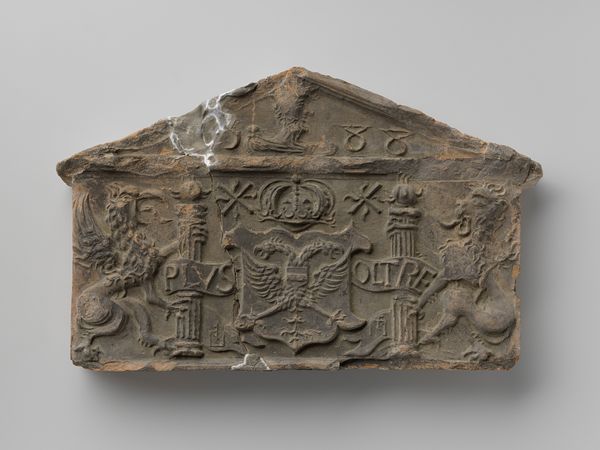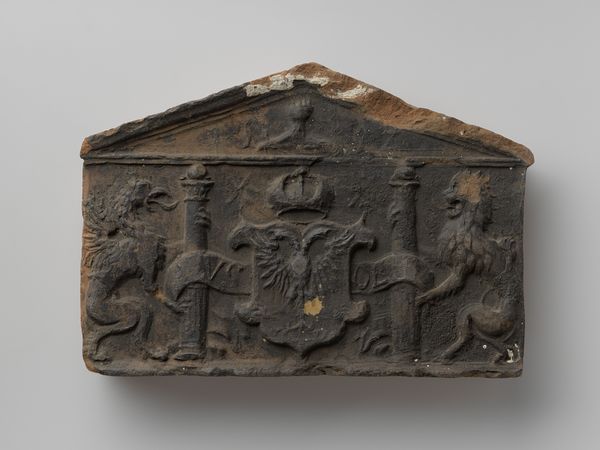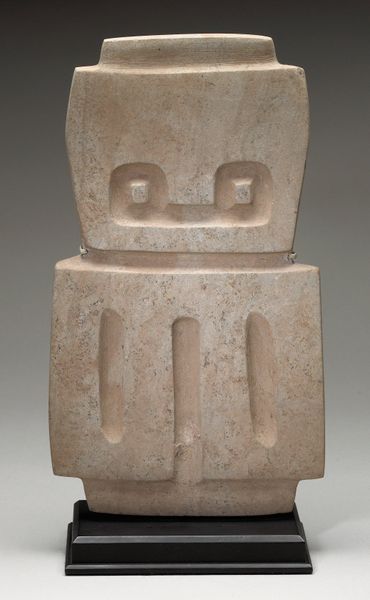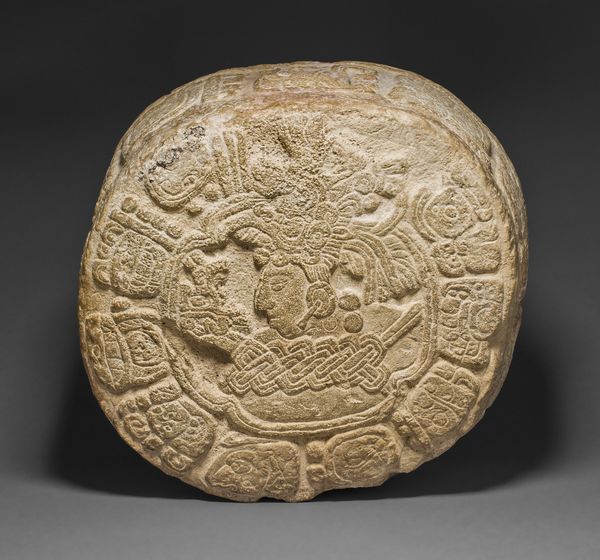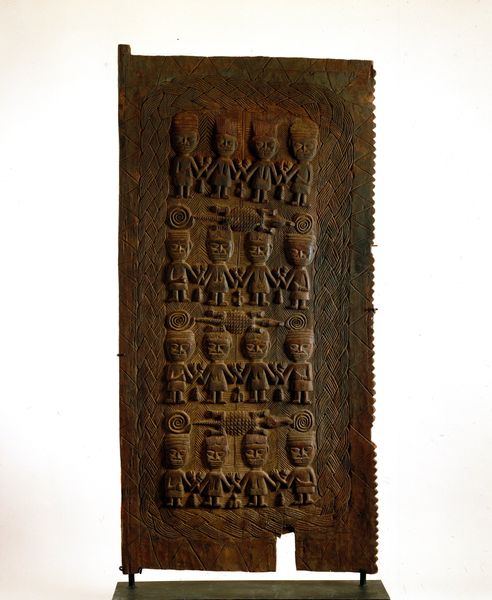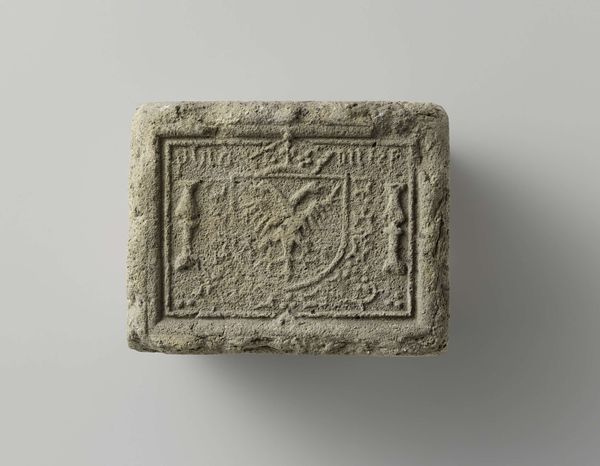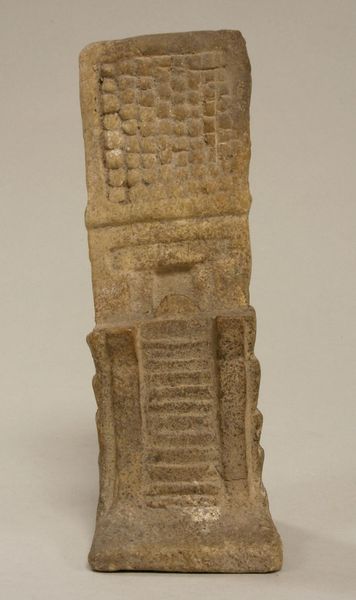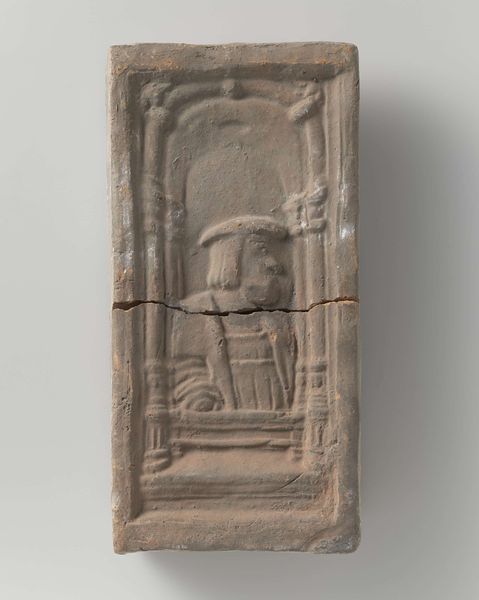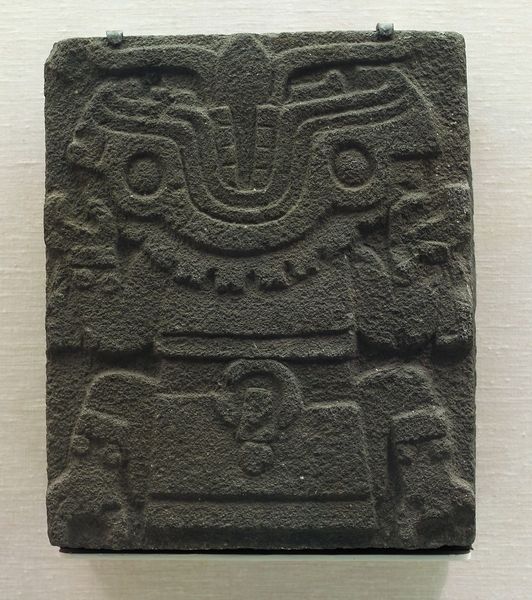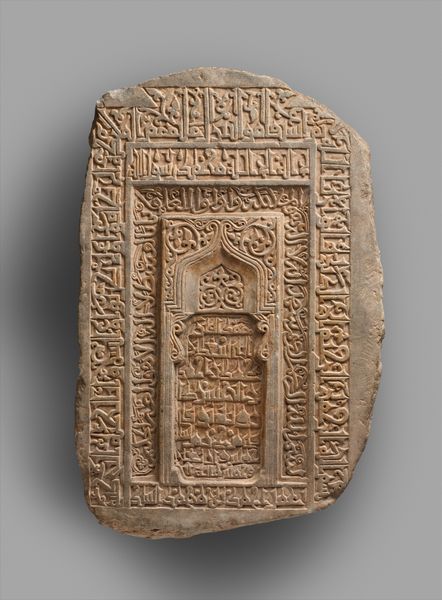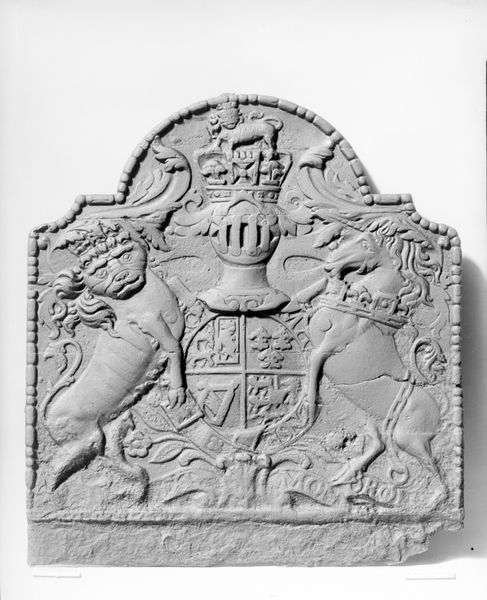
Coronation Stone of Motecuhzoma II (Stone of the Five Suns) 1503
0:00
0:00
carving, sculpture
#
carving
#
figuration
#
geometric
#
sculpture
#
indigenous-americas
Dimensions: 55.9 × 66 × 22.9 cm (22 × 26 × 9 in.)
Copyright: Public Domain
Curator: Gazing upon this stone, it's impossible not to feel a sense of profound history and reverence. This is the Coronation Stone of Motecuhzoma II, sometimes referred to as the Stone of the Five Suns, dating back to 1503. It provides valuable insights into Mexica cosmology, iconography, and sociopolitical power structures of the time. You can find it here at The Art Institute of Chicago. Editor: Wow, that's a mouthful! My first thought is just... geometry. It feels like a puzzle box carved from ancient desires, but muted by the erosion of time. The geometric patterns create this fascinating visual tension with what appear to be figural elements of faces and animalistic forms. What do you make of all the little circles, curator? Curator: Well, the circles and other glyphs were deeply meaningful. The stone was commissioned during the reign of Motecuhzoma II to commemorate his reign, linking his authority to cosmic and calendrical cycles. It's crucial to understand how time, cosmology, and power were intertwined in Mexica society. The "Five Suns," of course, refers to the successive eras, or worlds, of creation and destruction according to their cosmology. It serves as a reminder of the cyclical nature of time, and their role in it. Editor: Right! And knowing the era gives you the chills. It's literally the twilight of the Aztec Empire! Just before the Spanish showed up and everything changed...it must have been so incredibly charged to be carving this at that moment, layering meanings like that, unknowingly facing a monumental shift. I see stories everywhere—I am tempted to create an artwork with my impression of this imposing carved tablet. It also kind of reminds me of the work of Agnes Martin somehow! Maybe the repetitive circular motifs. I would even paint it, but in an incredibly subtle monochrome of similar greys. Curator: While I appreciate your interpretive license, it is important to understand the material and sociopolitical context. The stone provides a tangible representation of the ruler’s authority rooted in ancestral legitimacy and the very fabric of their perceived universe. We have to view such objects as dynamic players within pre-colonial historical moments, acknowledging Indigenous American philosophies that understood them as potent animate agents. Editor: Right, absolutely, its own entity from a vanished society... It still speaks though, doesn’t it? Whispering stories. All that dense carving, like memories trapped in the rock. I feel a little glimpse of the incredible scale of time. Curator: Indeed. Approaching the study of ancient American art through interdisciplinary lenses allows us to appreciate its complexity, challenge prevailing narratives, and ultimately recognize the profound contributions of these societies to human history. Editor: Agreed! So many histories embedded into the earth... I am profoundly grateful that artworks such as these offer us an insight to different approaches to existence.
Comments
No comments
Be the first to comment and join the conversation on the ultimate creative platform.
